Dance: The Best of 2012 | reviews, news & interviews
Dance: The Best of 2012
Dance: The Best of 2012
Much to gossip about, but there's less to see these days

Offstage dramas made more waves than onstage, where dance-followers have much less to see, and a prospect of still less in this arid immediate future.
Obituaries were written for the idiosyncratic dance-theatre performer Nigel Charnock, the composer of Frederick Ashton's magical Ondine Hans Werner Henze, Holland's influential choreographer-director Rudi Van Dantzig, Marcia Haydee's great dance partner in Stuttgart, Richard Cragun, and the long-time Times dance critic John Percival.
Every month brought something noteworthy to go to or to talk about. Just the one creation stood out for boldness and curiosity - a truly fresh creative collaboration between a gallery and a dance company.
January
26 January: Door left ajar for Royal Ballet star who quit
 "The young Royal Ballet star Sergei Polunin, Covent Garden's most remarkable male discovery for years, has quit the company in a stunning shock that today sent consternation throughout the ballet world from the USA to Japan.
"The young Royal Ballet star Sergei Polunin, Covent Garden's most remarkable male discovery for years, has quit the company in a stunning shock that today sent consternation throughout the ballet world from the USA to Japan.
...Not many dancers in any era have possessed such a complete package of classical balletic refinement, glorious natural grace and potent dramatic talent that Polunin has become fêted for by Covent Garden balletomanes, for whom this is a huge and unwelcome shock. In the depth and breadth of the Royal Ballet's repertoire, from ballet-drama to the purest classical style, young Polunin has been a prospect for true greatness.” ISMENE BROWN
Polunin, having issued several tension-ratcheting tweets (see above), celebrated freedom from Royal Ballet stardom by appearing in a couple of dubious male solos at Sadler’s Wells, then joined the Stanislavsky Ballet in Moscow, and is due to reappear in Britain in spring in Peter Schaufuss’s new ballet version of Midnight Express. In a remarkably handled interview with Julie Kavanagh, he declared himself happier in Russia, his personal circumstances improved, and his career well-mentored by Igor Zelensky. The events exposed not just the vulnerability of an emotionally stressed youth of massive talent, but the absolute necessity in a top-flight ballet life of mental as well as physical robustness.
February
2 February: The Dream/Song of the Earth, Royal Ballet
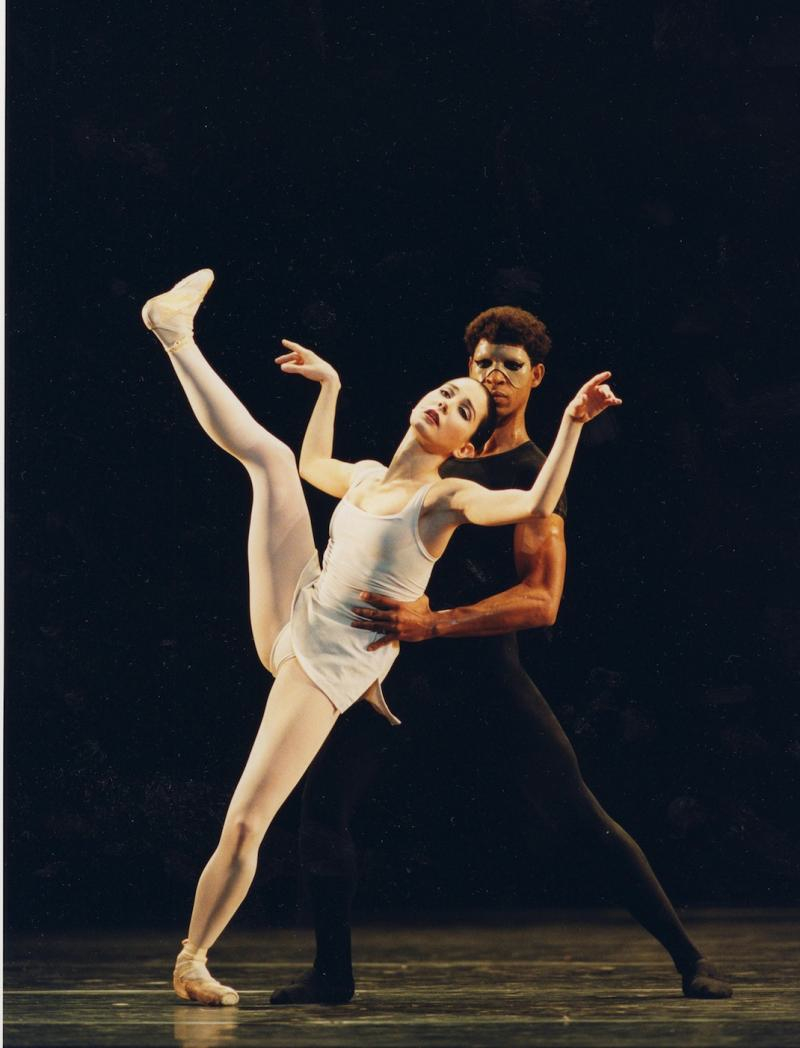
“…Despite [MacMillan's] varied and masterful plottings of many dancers it comes down to the lead ballerina to make the solemn journey from life to death. If there’s ever been a more evocative interpreter than Tamara Rojo, I can’t imagine it. Lightly tapered in detail here, intensely enriched with significance there, her presence is so piercingly judged between anonymous girl in the crowd and the figure who stands for all of us that she becomes a redeemer as much as a sufferer.
...Carlos Acosta, as the Messenger, grew in stature and expressiveness to fulfil the transfiguring end without grandstanding, simply making a statement of inevitability: that death must come.” IB
Pictured right, Rojo and Acosta in Song of the Earth, © Bill Cooper/ROH
March
29 March: Apollo/Jeux/Suite en Blanc, English National Ballet, London Coliseum
 “Just a typical night at the ballet. The sun god rises with his goddesses, people play tennis and flirt in a garden, a handsome young chap struts his considerable stuff on a Twenties beach, and an array of white-tutu’d ballerinas perform deliciously difficult and exultantly accelerating steps. So many stories flit by in an evening of ballet, so many ideas and fancies, so many dancers skim through your vision. Debussy caresses your ear, majestic Stravinsky, teasing Milhaud, Lalo like a large stuffed brocade sofa. How is it that this kind of evening is not typical of the ballet?
... A wonderful final calling-card for the outgoing artistic director Wayne Eagling, a wonderful calling-card for ballet too.” IB
“Just a typical night at the ballet. The sun god rises with his goddesses, people play tennis and flirt in a garden, a handsome young chap struts his considerable stuff on a Twenties beach, and an array of white-tutu’d ballerinas perform deliciously difficult and exultantly accelerating steps. So many stories flit by in an evening of ballet, so many ideas and fancies, so many dancers skim through your vision. Debussy caresses your ear, majestic Stravinsky, teasing Milhaud, Lalo like a large stuffed brocade sofa. How is it that this kind of evening is not typical of the ballet?
... A wonderful final calling-card for the outgoing artistic director Wayne Eagling, a wonderful calling-card for ballet too.” IB
Pictured above, ENB in Lifar's Suite en blanc, © Annabel Moeller
April
5 April: Sweet Violets/ Carbon Life, Royal Ballet
 "All year we've had to wait for a world premiere, and two come along at once... Scarlett’s Sweet Violets is an impenetrable jangle of narrative in the old style; McGregor’s Carbon Life an unyielding jangle of amoeba-like dance in the new. Each is richly decorated, Scarlett’s with fine theatrical sets for his psychodrama about Walter Sickert, a painter with a nasty turn of mind, and McGregor’s with a grid that goes up and down and an array of today’s popsters performing live on stage, Mark Ronson as composer and bass guitarist, Boy George, Hero Fisher, Alison Mosshart among the singers. Each sinks under the ponderous weight of its own image-making." IB
"All year we've had to wait for a world premiere, and two come along at once... Scarlett’s Sweet Violets is an impenetrable jangle of narrative in the old style; McGregor’s Carbon Life an unyielding jangle of amoeba-like dance in the new. Each is richly decorated, Scarlett’s with fine theatrical sets for his psychodrama about Walter Sickert, a painter with a nasty turn of mind, and McGregor’s with a grid that goes up and down and an array of today’s popsters performing live on stage, Mark Ronson as composer and bass guitarist, Boy George, Hero Fisher, Alison Mosshart among the singers. Each sinks under the ponderous weight of its own image-making." IB
Pictured right, Eric Underwood in McGregor's Carbon Life, © Bill Cooper/ROH
12 April: Tamara Rojo, prima ballerina, becomes English National Ballet’s director
“Royal Ballet prima ballerina Tamara Rojo has been appointed the new artistic director of English National Ballet... When two months ago the ENB Board made a sudden announcement that current director Wayne Eagling would leave this summer, Rojo's name was among the first names to be rumoured...Though such opportunities crop up extremely rarely, the ballerina's youth and inexperience will raise questions. At 37, she is at her peak as a dancer, and she is a major world ballerina with an undoubted box office appeal... Surefooted as she has proved in her dancing career, Rojo knows she follows in a line of unhappy tenures at English National Ballet, as one by one the artistic directors have fallen foul of the company's Board.” IB
May
16 May: The Art of Touch, Rambert, Sadler’s Wells
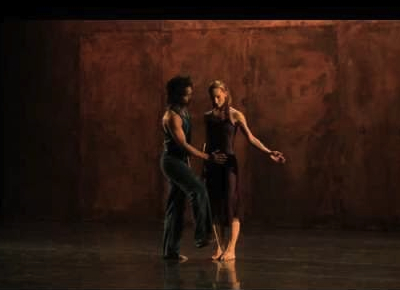 “Rambert’s director for the past decade, Mark Baldwin, has always turned with love to past works, and he must know that it’s Siobhan Davies’s 1995 The Art of Touch on this 10th anniversary programme that is its star, and which shows just what richly refined and responsive individuals he now numbers in his elite band. This is, simply, a masterpiece of musical choreography, both a dance-poem to courtly love in a long-past era, and yet astoundingly and vividly expressive of the essence of the harpsichord, the instrument whose plucked and buzzing strings define it.
“Rambert’s director for the past decade, Mark Baldwin, has always turned with love to past works, and he must know that it’s Siobhan Davies’s 1995 The Art of Touch on this 10th anniversary programme that is its star, and which shows just what richly refined and responsive individuals he now numbers in his elite band. This is, simply, a masterpiece of musical choreography, both a dance-poem to courtly love in a long-past era, and yet astoundingly and vividly expressive of the essence of the harpsichord, the instrument whose plucked and buzzing strings define it.
Set between shadowy, renaissance gold walls, the seven dancers in dark evening-wear might be the seven notes of the sol-fa scale, while the series of dances leap in and out of the textures of baroque Scarlatti sonatas and Matteo Fargion's taut modern variations on them." IB
Pictured above, Angela Towler and Miguel Altunaga in The Art of Touch, © Hugo Glendinning
22 May: La Sylphide, Royal Ballet
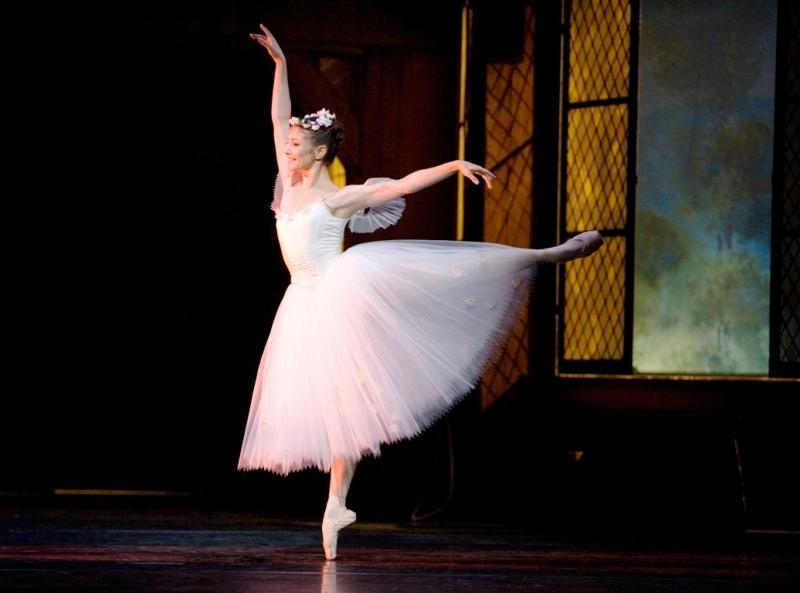 “[In] a revival of Johan Kobborg’s staging of August Bournonville’s early 19th-century classic of the Romantic repertoire Alina Cojocaru (pictured right, © Johan Persson) could not be more perfectly cast than the sylph that slides into a prosaic Scottish farmhouse and lures the soon-to-be-married James away from his fiancée Effie to the forest glen where, of course, he meets an unhappy end.
“[In] a revival of Johan Kobborg’s staging of August Bournonville’s early 19th-century classic of the Romantic repertoire Alina Cojocaru (pictured right, © Johan Persson) could not be more perfectly cast than the sylph that slides into a prosaic Scottish farmhouse and lures the soon-to-be-married James away from his fiancée Effie to the forest glen where, of course, he meets an unhappy end.
Cojocaru is a dancer of richness. Here her acting skills make the mysterious sylph live. Does she want James because she is in love with him? Or because she wants to torment him? To spite Effie? Is she driven to it by something greater than herself? With Cojocaru it is all of these things, and they change, from minute to minute. Now she is alluring, now she is a puppy begging her new-found friend to come and play, now she is a tantalising scent on the breeze, barely visible at all. In her dancing, the accents, speeding up, slowing down, never come where one expects. Yet they are not perversely chosen, but always driven by the music first, and then the drama.” JUDITH FLANDERS
June
7 June-9 July: World Cities, Tanztheater Wuppertal Pina Bausch, Sadler’s Wells & Barbican
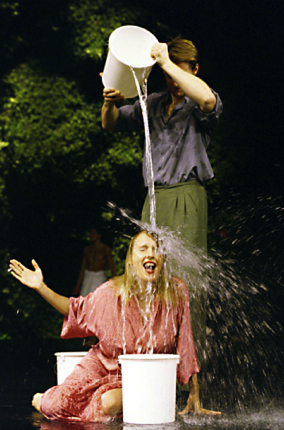 “Let us conclude, after London’s season of World Cities - 10 dance shows - that Pina Bausch was not a choreographer. She began 50 years ago in Essen as a ballet dancer and like so many dancers in that field got bored with the rules. When she took over ballet in Wuppertal in 1973, she clearly had rule-breaking in mind but also had something inside her head very different from what one might identify as the geometry of dance.
“Let us conclude, after London’s season of World Cities - 10 dance shows - that Pina Bausch was not a choreographer. She began 50 years ago in Essen as a ballet dancer and like so many dancers in that field got bored with the rules. When she took over ballet in Wuppertal in 1973, she clearly had rule-breaking in mind but also had something inside her head very different from what one might identify as the geometry of dance.
She is undoubtedly a stage poet, in my view more Surrealist than Expressionist - striving in a genuinely theatrical way to fulfil Marianne Moore’s advice that poets should attempt to build “imaginary gardens with real toads in them”. Early Bausch works such as The Rite of Spring and Café Müller are fraught with conflict and melancholy, and in a more or less conventional sense choreographically designed, especially her Rite. Should arguments to support her later works collapse, that will remain her masterpiece. Doubts, alas, begin with Bausch’s attempt to internationalise her shows...
As this bold, month-long piece of programming at Sadler’s Wells and the Barbican shows, everything that’s different is roughly the same. On stage people come and people go; there’s lots of water, lots of smoking, lots of high heels, lots of things wished for and spoken out loud by adults with the insouciance of children, and lots of solos by lithe and beautiful performers which, however, say little. She borrows from foreign cultures but never explores them. She is unteleological... (Pictured above, Julie Shanahan takes the water in Wiesenland, © Bettina Stöss)
Bausch is a tease, a frustrator, an original artist for sure who distrusts art: less choreographer than, as her legions of fans and the standing ovations night after night in London have proven, popular entertainer.” JAMES WOODALL
Four of us went to the 10 productions - James Woodall, Judith Flanders, Sarah Kent and I. Find the 10 reviews on this link.
28 June: Faster, Birmingham Royal Ballet, Birmingham Hippodrome
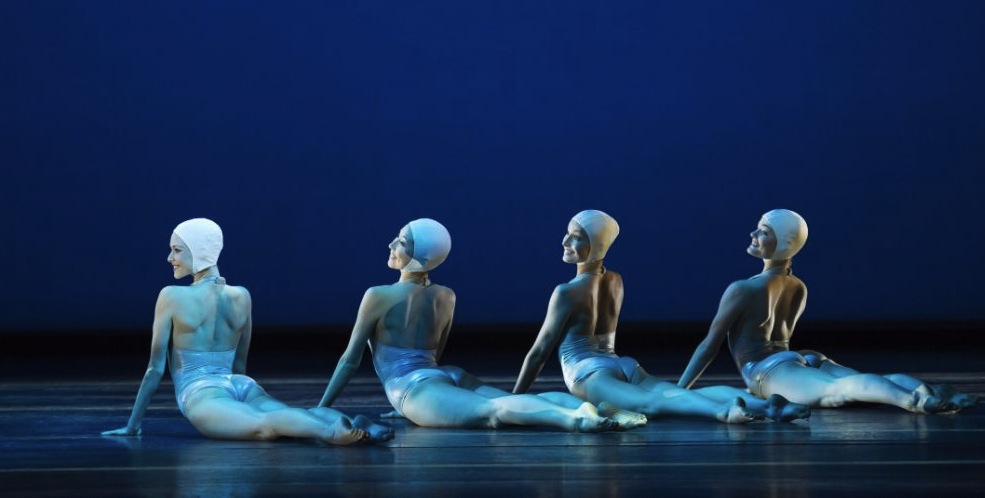 "[David Bintley's new ballet] is a very good piece of work, fast, strong, theatrically clever and musically powerful, a smart use of athletics motifs in a balletic aesthetic, making riches of slender resources and a credit to British endeavour. Faster fields dancers very fetchingly clothed in skin-tight sports outfits by the new young designer Becs Andrews, attractive takes on gymwear, swimwear, cycling bodysuits, basketball sweats and track athletes’ two-pieces, with a lot of long beautiful legs and washboard stomachs on view... It has echoes of the multi-screen effects of American modern dance of Twyla Tharp and Merce Cunningham as your eye switches between groups of "athletes", but you keep spotting discreet motifs, the archer girls’ lovely bow-drawn ports de bras, the tae-kwondo’s kick becoming a swift ballet développé...
"[David Bintley's new ballet] is a very good piece of work, fast, strong, theatrically clever and musically powerful, a smart use of athletics motifs in a balletic aesthetic, making riches of slender resources and a credit to British endeavour. Faster fields dancers very fetchingly clothed in skin-tight sports outfits by the new young designer Becs Andrews, attractive takes on gymwear, swimwear, cycling bodysuits, basketball sweats and track athletes’ two-pieces, with a lot of long beautiful legs and washboard stomachs on view... It has echoes of the multi-screen effects of American modern dance of Twyla Tharp and Merce Cunningham as your eye switches between groups of "athletes", but you keep spotting discreet motifs, the archer girls’ lovely bow-drawn ports de bras, the tae-kwondo’s kick becoming a swift ballet développé...
It’s ballet, but it’s athletics too, and what makes it good art is that it is musical expression too - this is another confident step in the new renaissance of music-driven ballet, spearheaded by Bintley at BRB and by Mark Baldwin at Rambert. Bintley seems finally to be coming into a rich maturity in his talent for sheer balletic movement, more confident in recent years, working not with narratives (at which he's iffy) but with really exciting new scores. This one is again by the hugely impressive Matthew Hindson, the Australian composer who composed the music for Bintley’s 2010 ballet, e=mc2. What Hindson is doing with Bintley, as Julian Anderson and Gavin Higgins have done with Baldwin, is generating an exhilarating new revival of serious music in the dance theatre, fascinating for the audience and challenging to the dancers." IB
Pictured above, Bintley's Faster, © Bill Cooper/BRB
Next page, July-December
July
5 July: Dance GB, Royal Naval College, Greenwich
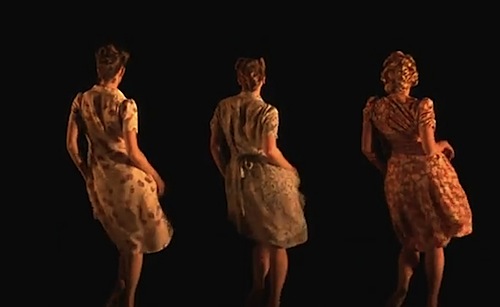 "It was one of the better Olympic culture ideas that Wales, Scotland and England should combine in a Dance GB night, with the three “national” dance companies all creating something new. But a risk that had little Wales holding its breath in fear, up against the might of English National Ballet and Scottish Ballet. And who would have expected the 12-strong National Dance Company Wales to emerge as unexpected heroes?
"It was one of the better Olympic culture ideas that Wales, Scotland and England should combine in a Dance GB night, with the three “national” dance companies all creating something new. But a risk that had little Wales holding its breath in fear, up against the might of English National Ballet and Scottish Ballet. And who would have expected the 12-strong National Dance Company Wales to emerge as unexpected heroes?
Truly this wee troupe stepped up to the plate, nabbing the world-famous Christopher Bruce for their choreographer, and being rewarded with the audience hit of the night... Dream is a delightful piece of balletic Alan Bennett-ese, with Fifties mums and dads doing the egg-and-spoon and sack race on school sports day, but dreaming of being proper athletes in their imagination. And so they gradually strip down to their calico austerity undies as they swim, skate, fence, and hurdle to glory... The dance contrives in lovably earthy terms to comment on the licence for athletes to express themselves to their utmost while ordinary people could only dream, emerging from post-war austerity.” IB
15 July: Metamorphosis: Titian 2012, Royal Ballet & National Gallery
“The bells ring out for creativity in the Royal Ballet’s final production under its outgoing director, Monica Mason... Metamorphosis: Titian 2012 is a cross-platform hybrid of too-rare provenance: it was germinated when the National Gallery asked three artists, Chris Ofili, Conrad Shawcross and Mark Wallinger, to make new work responding to the three great Titian paintings about Diana and Actaeon... The gallery also wanted the Royal Ballet to add a choreographic dimension. The Royal Opera House expanded the entire thing to embrace Mason’s departure with a ceremony of choreographers raised in her 10-year tenure, three new ballet scores commissioned from today’s composers, and stage designs from the artists related to their National Gallery artworks.
...Dame Monica took a curtain call bouncing in delight at what had been done, stars and creatives all massed on stage around her. It was a fine way to party, and a fine celebration with which to wish for a metamorphosis of the Royal Ballet from a smart museum to a creative powerhouse again. Seven choreographers? Many ballet companies are lucky to have two.” IB
See Sarah Kent's review of the National Gallery exhibition.
14 July: Matthew Bourne’s Play Without Words, Sadler’s Wells
 “Matthew Bourne’s most original masterpiece has come out of hiding into full view, a giddy, sexy, diabolical confection that hovers on the edge of hellish, and deserves to become a global smash. Play Without Words is everything that any sex comedy could aspire to, everything that a film noir could aim for, and much more dangerous than either theatre or film can be, because it’s what bodies do, not what mouths say, that is leading you into your own sinful nature.
“Matthew Bourne’s most original masterpiece has come out of hiding into full view, a giddy, sexy, diabolical confection that hovers on the edge of hellish, and deserves to become a global smash. Play Without Words is everything that any sex comedy could aspire to, everything that a film noir could aim for, and much more dangerous than either theatre or film can be, because it’s what bodies do, not what mouths say, that is leading you into your own sinful nature.
...Lez Brotherston created for it one of his most evocative sets, where white Belgravia lurches behind a red bus and a scarlet phone box, where a mobile white staircase doubles as the entrance into a spacious drawing room, where black railings outside indicate a public gents’ lav, the scene only needing Sergeant Dixon to amble by. And in that street, as the piece opens, a wild jazzman is disturbing the SW1 peace with his trumpet,... who will play a role somewhere between Puck, the imp of sexual mischief, and Lucifer, the lord of damnation, mixing up classes, genders, rules, definitions, leaving only debris and broken men behind.
He is the only character to be played by a single actor - all the others are triplicated and duplicated, a genius device, because they’re going to be smashed up.” IB
Earlier in the year Bourne's Early Adventures tour showed what a sassy wit he was from the start, but in December his much-hyped Sleeping Beauty update was a disappointment.
August
2 August: Dancer Nigel Charnock 1960-2012
 "True originals are those who keep contemporary arts bright, and one of the handful of dance performers who set the 1980s and 90s on fire was a bony, white-skinned, bleakly witty and garrulous physical clown with a taste for the extreme called Nigel Charnock. The news of his death last night from cancer at the age of only 52 feels painful to anyone who suffered and laughed so much at some of his merciless works.
"True originals are those who keep contemporary arts bright, and one of the handful of dance performers who set the 1980s and 90s on fire was a bony, white-skinned, bleakly witty and garrulous physical clown with a taste for the extreme called Nigel Charnock. The news of his death last night from cancer at the age of only 52 feels painful to anyone who suffered and laughed so much at some of his merciless works.
...He and Lloyd Newson together founded DV8 in 1986 with a provocative duet, My Sex Our Dance, an aggressive exploration of male relationships; two years later, DV8 established its breakthrough with the astonishing Dead Dreams of Monochrome Men, a gruelling and yet graceful all-male work about the necrophiliac serial killer Dennis Nilsen. Charnock's jittery, disquieting persona featured powerfully in the film and also in the subsequent acclaimed production Strange Fish.
...I was among many watchers who felt strong affection for Nigel Charnock as a performer - at their best-expressed, his opinions and physical ideas had daring honesty and also a timeless theatricality that stuck to your mind like burrs... A talent so sharp and unusual deserved a much wider fame, and yet that might have blunted its defiance.” IB
DV8's superb 2011 Can We Talk About This had its London premiere at the National Theatre earlier in the year.
September
15 September: San Francisco Ballet, Sadler’s Wells
 "It's been eight years since San Francisco Ballet were last here, charming us with their finesse and their smiles - welcome back. They offer a boost of spirit to the gloomsters of ballet over here. This small city which punches many times above its weight in the cultural world owes a vast amount of its self-confidence and charisma to its mixed ethnic roots... But only a gifted, purposeful artistic director, which Helgi Tomasson evidently is, can fashion eager youngsters from such varied cultures and physiques to cohere with the shared artistry of a company that is aesthetically as much as home in middle Europe and Russia as in America, and so winningly includes their audience in their belief.
"It's been eight years since San Francisco Ballet were last here, charming us with their finesse and their smiles - welcome back. They offer a boost of spirit to the gloomsters of ballet over here. This small city which punches many times above its weight in the cultural world owes a vast amount of its self-confidence and charisma to its mixed ethnic roots... But only a gifted, purposeful artistic director, which Helgi Tomasson evidently is, can fashion eager youngsters from such varied cultures and physiques to cohere with the shared artistry of a company that is aesthetically as much as home in middle Europe and Russia as in America, and so winningly includes their audience in their belief.
"San Francisco’s dancers, whatever their rank, perform like stars, with fastidious, pretty feet and hands and American blast. I loved them, even when I didn’t love their rep... All of them are personally showing ballet’s beauties, mutually comprehended and individually subsumed with a disciplined desire to achieve the work for itself (ie, no showing off).” IB
October
18 October: The Sleeping Beauty, English National Ballet
“Has the great ballerina Tamara Rojo ever done a more nervewracking performance than she did last night in Milton Keynes? On her first night as player-manager of English National Ballet, both its new artistic director and its chief ballerina, she had to inhabit the skin of a dewy 16-year-old discovering the world - all the while watching the stage with the steel gaze of a boss to see if her employees were doing their job to standard. ...Reliant as ENB's box office is going to be on Rojo's drawing power as a ballerina, it is a working model likely to force normal expectations into unknown territory.
"Even Rojo, with her superb technique, showed shaking legs as she took on the Rose Adagio's exultant, girl-power balances. No doubt among the men too there were quaking legs as they waited to see when their boss wanted a helping hand... But these are perhaps subplots to be winked at backstage. The innocent public was watching a richly resonant performance of The Sleeping Beauty.” IB
19 October: Michael Clark, New Work 2012, Barbican
"The first half is brief, skimpily imagined and dull to the point of toothache... but the second half is another matter altogether - it has some extraordinarily strange stuff, the most stimulating and unpredictable mood-movement from Clark recently. The dancers' varied bodies are packed into shiny, flame-coloured skinsuits, with a spacey video animation behind them spelling out questions in mirror-writing: "Why me? Why you? I'm thinking about starting a zoo." With numbing slowness, the dancers strike some high-tension balances that might almost be created in CGI, so odd are they, while Pulp's seductive "F.E.E.L.I.N.G.C.A.L.L.E.D.L.O.V.E." plays through the speakers.
Then uproar: the screen flies away, Jarvis Cocker's alter egos, the Hallowe’eny-looking band Relaxed Muscle (see their Sexualised video above), are revealed in person, and decibels of distorted beats and guitar drill through the roots of your teeth... the stage is totally magnetised by Cocker’s half-decayed-looking Darren Spooner creepily moseying around, frightening the people in the stalls. It doesn’t matter what Clark offers from now on: it’s the singer’s night. So - a good show? Oh yes, finally, in terms of electricity. Definitely an "event". Though at well under an hour’s actual show, some may not find it quite enough bang for the buck." IB
November
4 November: Liam Scarlett’s Viscera, Royal Ballet
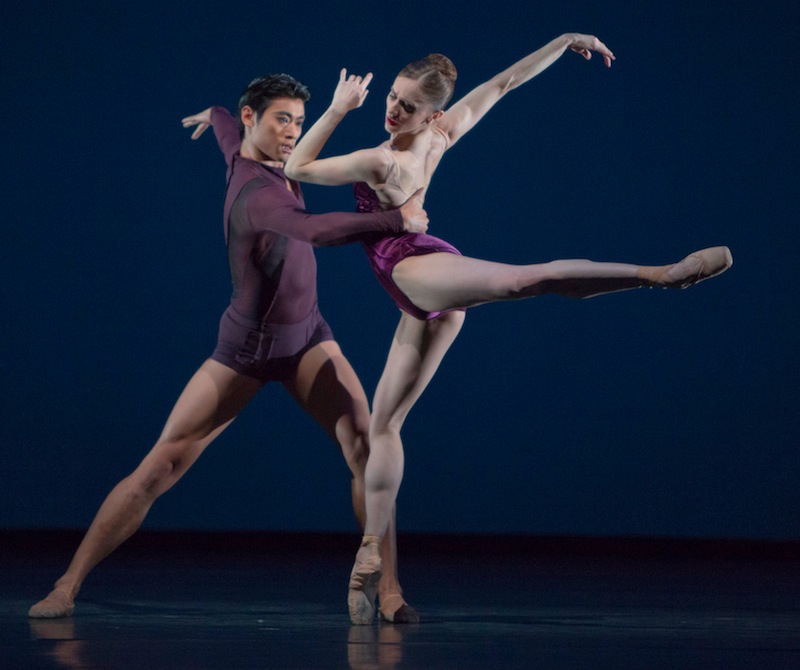 "A new Liam Scarlett ballet has become an event, even as, in this case, Scarlett’s home company, the Royal Ballet, is recreating a work he choreographed last January for Miami City Ballet – the young choreographer’s first international commission.
"A new Liam Scarlett ballet has become an event, even as, in this case, Scarlett’s home company, the Royal Ballet, is recreating a work he choreographed last January for Miami City Ballet – the young choreographer’s first international commission.
...While the speed, the attack, the sky-high six-o’clock battements are [Balanchine] homage..., the attention to the upper body, the quirky counterpoised torsos, are entirely Scarlett’s own, developing from his Ashton training into an invigoratingly original style of his own. As we have come to expect with Scarlett, Viscera is filled with striking moments where what had seemed a safe, recognised pattern suddenly becomes unfamiliar, like a dream where time stretches and the faces of friends become Other, as when the corps women, dressed in black, turn away from the soloists, circling, like birds of prey. Or when Scarlett uses his classically centred background in combination with the more energised American style to create a central pas de deux of hauntingly familiar strangeness.”JUDITH FLANDERS
Pictured above, Ryochi Hirano and Marianela Nuñez in Viscera, © Andrej Uspenski/ROH
December
The Royal Opera House search team began headhunting for Tony Hall's successor as chief executive who must take up the job in March. Hall's appointment to calm the tumult at the BBC had a logic of its own - journalism and arts have long swapped their finest talents to mutual benefit.
- Best of the year: Metamorphosis: Titian 2012 as a refreshing National Gallery and Royal Ballet collaboration
- Worst of the year: Schaufuss Ballet's Tchaikovsky Trilogy and Eifman Ballet's Anna Karenina
- Prospect for 2013: Alexei Ratmansky's first creation for the Royal Ballet (February)
See What's On in 2013 in theartsdesk's comprehensive planning calendar
Explore topics
Share this article
Add comment
The future of Arts Journalism
You can stop theartsdesk.com closing!
We urgently need financing to survive. Our fundraising drive has thus far raised £49,000 but we need to reach £100,000 or we will be forced to close. Please contribute here: https://gofund.me/c3f6033d
And if you can forward this information to anyone who might assist, we’d be grateful.

Subscribe to theartsdesk.com
Thank you for continuing to read our work on theartsdesk.com. For unlimited access to every article in its entirety, including our archive of more than 15,000 pieces, we're asking for £5 per month or £40 per year. We feel it's a very good deal, and hope you do too.
To take a subscription now simply click here.
And if you're looking for that extra gift for a friend or family member, why not treat them to a theartsdesk.com gift subscription?
more Dance
 'We are bowled over!' Thank you for your messages of love and support
Much-appreciated words of commendation from readers and the cultural community
'We are bowled over!' Thank you for your messages of love and support
Much-appreciated words of commendation from readers and the cultural community
 R:Evolution, English National Ballet, Sadler's Wells review - a vibrant survey of ballet in four acts
ENB set the bar high with this mixed bill, but they meet its challenges thrillingly
R:Evolution, English National Ballet, Sadler's Wells review - a vibrant survey of ballet in four acts
ENB set the bar high with this mixed bill, but they meet its challenges thrillingly
 Like Water for Chocolate, Royal Ballet review - splendid dancing and sets, but there's too much plot
Christopher Wheeldon's version looks great but is too muddling to connect with fully
Like Water for Chocolate, Royal Ballet review - splendid dancing and sets, but there's too much plot
Christopher Wheeldon's version looks great but is too muddling to connect with fully
 iD-Reloaded, Cirque Éloize, Marlowe Theatre, Canterbury review - attitude, energy and invention
A riotous blend of urban dance music, hip hop and contemporary circus
iD-Reloaded, Cirque Éloize, Marlowe Theatre, Canterbury review - attitude, energy and invention
A riotous blend of urban dance music, hip hop and contemporary circus
 How to be a Dancer in 72,000 Easy Lessons, Teaċ Daṁsa review - a riveting account of a life in dance
Michael Keegan-Dolan's unique hybrid of physical theatre and comic monologue
How to be a Dancer in 72,000 Easy Lessons, Teaċ Daṁsa review - a riveting account of a life in dance
Michael Keegan-Dolan's unique hybrid of physical theatre and comic monologue
 A Single Man, Linbury Theatre review - an anatomy of melancholy, with breaks in the clouds
Ed Watson and Jonathan Goddard are extraordinary in Jonathan Watkins' dance theatre adaptation of Isherwood's novel
A Single Man, Linbury Theatre review - an anatomy of melancholy, with breaks in the clouds
Ed Watson and Jonathan Goddard are extraordinary in Jonathan Watkins' dance theatre adaptation of Isherwood's novel
 Peaky Blinders: The Redemption of Thomas Shelby, Rambert, Sadler's Wells review - exciting dancing, if you can see it
Six TV series reduced to 100 minutes' dance time doesn't quite compute
Peaky Blinders: The Redemption of Thomas Shelby, Rambert, Sadler's Wells review - exciting dancing, if you can see it
Six TV series reduced to 100 minutes' dance time doesn't quite compute
 Giselle, National Ballet of Japan review - return of a classic, refreshed and impeccably danced
First visit by Miyako Yoshida's company leaves you wanting more
Giselle, National Ballet of Japan review - return of a classic, refreshed and impeccably danced
First visit by Miyako Yoshida's company leaves you wanting more
 Quadrophenia, Sadler's Wells review - missed opportunity to give new stage life to a Who classic
The brilliant cast need a tighter score and a stronger narrative
Quadrophenia, Sadler's Wells review - missed opportunity to give new stage life to a Who classic
The brilliant cast need a tighter score and a stronger narrative
 The Midnight Bell, Sadler's Wells review - a first reprise for one of Matthew Bourne's most compelling shows to date
The after-hours lives of the sad and lonely are drawn with compassion, originality and skill
The Midnight Bell, Sadler's Wells review - a first reprise for one of Matthew Bourne's most compelling shows to date
The after-hours lives of the sad and lonely are drawn with compassion, originality and skill
 Ballet to Broadway: Wheeldon Works, Royal Ballet review - the impressive range and reach of Christopher Wheeldon's craft
The title says it: as dancemaker, as creative magnet, the man clearly works his socks off
Ballet to Broadway: Wheeldon Works, Royal Ballet review - the impressive range and reach of Christopher Wheeldon's craft
The title says it: as dancemaker, as creative magnet, the man clearly works his socks off
 The Forsythe Programme, English National Ballet review - brains, beauty and bravura
Once again the veteran choreographer and maverick William Forsythe raises ENB's game
The Forsythe Programme, English National Ballet review - brains, beauty and bravura
Once again the veteran choreographer and maverick William Forsythe raises ENB's game

Comments
But what about the Royal